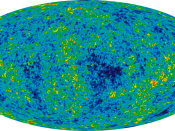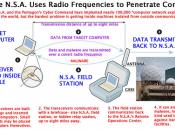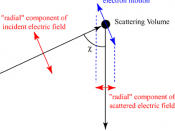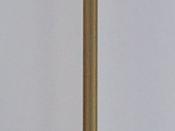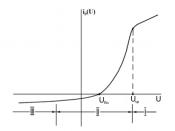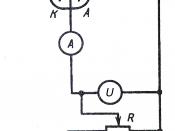Observations of bi-Maxwellian and single Maxwellian electron energy distribution functions in a capacitively coupled radio-frequency plasmas by laser Thomson scattering M. A. Mansour ElSabbagh,a) M.D. Bowden, K. Uchino, and K. Muraoka Interdisciplinary Graduate School of Engineering Sciences, Kyushu University, Kasuga, Fukuoka 816-8580, Japan ~Received 20 November 2000; accepted for publication 19 February 2001! Electron energy distribution functions in low-pressure capacitively coupled radio-frequency argon discharges were measured using the technique of laser Thomson scattering. It was found that the distribution functions changed from a bi-Maxwellian at lower pressures to a single Maxwellian at higher pressures. These measurements provide independent confirmation of probe measurements made in similar discharges. The electron temperature and density of the cold group of electrons were measured with an accuracy of better than 10%. ÃÂé 2001 American Institute of Physics.
@DOI: 10.1063/1.1363695# Low pressure capacitively coupled radio-frequency ~rf! discharges are used widely in industrial applications, such as material processing for microelectronics.
Measurement of the electron energy distribution function ~eedf! is important for understanding the physical processes in these plasmas, such as plasma chemistry and calculating reaction rates in discharges. For these reasons, there have been extensive studies of electron behavior in capacitively coupled rf plas-mas, including experiments mostly based on electric probe techniques 1""8 and modeling and simulation studies.9""12 A common result in many of these studies is the obser-vation of a non-Maxwellian eedf for some discharge condi-tions.
Godyak and Piejak 1 measured non-Maxwellian eedf in argon discharges using a Langmuir probe, and noted that the non-Maxwellian eedf could be considered as a summation of Maxwellian distributions of two groups of electrons. In other words, they considered the eedf as consisting of separate low temperature and high temperature components. The high temperature component of the eedf was attributed to stochas-tic electron heating in the rf sheaths of the plasma enhanced by the Ramsauer effect. The appearance of bi-Maxwellian distributions was attributed to insufficient energy exchange of the high and the low temperature components. Similar results and conclusions have been obtained by other groups.4""8 The bi-Maxwellian eedf also has been obtained during computer simulation and modeling studies of capaci-tively coupled rf discharges in argon and other gases.9""12 Godyak and co-workers have stated that the limitations of the energy resolution and range of Langmuir probes make determination of low-energy electrons and detection of rela-tively high-energy electron tails difficult for some discharge conditions.
The consistency of probe results obtained by many groups, along with simulation and modeling studies, have led to a set of widely accepted conclusions about the electron heating mechanisms in capacitively coupled rf plasmas.
However, because of the potential problems of probe meth- ods, it is important that experimental results be confirmed by an independent technique. It is also important that the tem-perature and density of the low-temperature component of bi-Maxwellian eedf be determined accurately.
In this letter, we report the results of electron property measurements of capacitively coupled rf plasmas made using the method of laser Thomson scattering. Laser Thomson scattering is a relatively complicated method experimentally, but has the significant advantages including a method that is non-perturbing and that experimental results can be inter-preted straightforwardly. Previous studies have demonstrated the usefulness of this technique for studying electron behav-ior in relatively high density plasmas,13""16 while we recently reported the development of an experimental system capable of making accurate measurements in very low electron den-sity conditions, found in low pressure capacitively coupled rf plasmas.17 The aim of this letter is to show the measured eedf in these plasmas and to compare the results with those obtained by other groups.
Details of the experimental system were shown elsewhere 17 and we describe its most salient features here.
The discharge chamber was a cylindrically shaped stainless-steel vacuum chamber with a diameter of 300 mm. Argon plasmas were sustained between two parallel plate-electrodes made of stainless steel. The electrodes had a diameter of 100 mm and were separated by 20 mm. The upper electrode was connected to a 13.56 MHz power supply through matching network, while the lower electrode was connected to the chamber wall and to the ground.
The laser source was a Nd:YAG laser operated at the second harmonic wavelength of 532 nm. It had a pulse en-ergy of 400 mJ, a pulse width of 7 ns, a beam divergence of 0.5 mrad, and was operated at a repetition rate of 10 Hz. The laser beam was injected in a plane parallel to the electrode surface and passed through the central plane of the plasma. It was focused to the center of the chamber by a lens with a focal length of 670 mm. A beam dump, a viewing dump, baffles, and Brewster windows were used to minimize the stray light level. The scattered light was collected by a lens with diameter of 130 mm and a focal length of 200 mm, at a! Electronic mail: mansour@asem.kyushu-u.ac.jp APPLIED PHYSICS LETTERS VOLUME 78, NUMBER 21 21 MAY 2001 3187 0003-6951/2001/78(21)/3187/3/$18.00 ÃÂé 2001 American Institute of Physics Downloaded 18 May 2001 to 129.25.14.96. Redistribution subject to AIP license or copyright, see http://ojps.aip.org/aplo/aplcr.jsp
